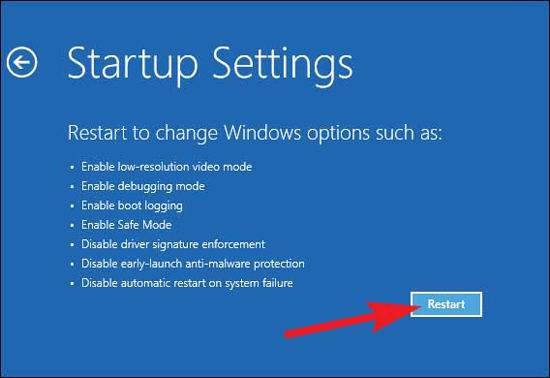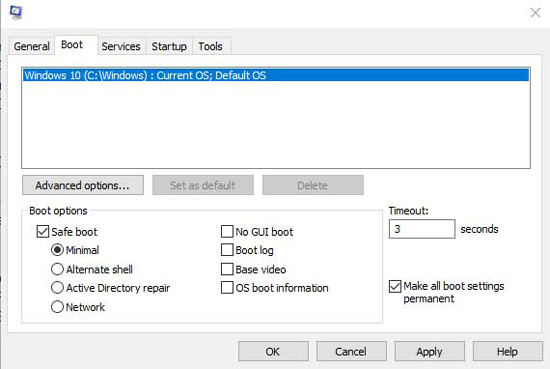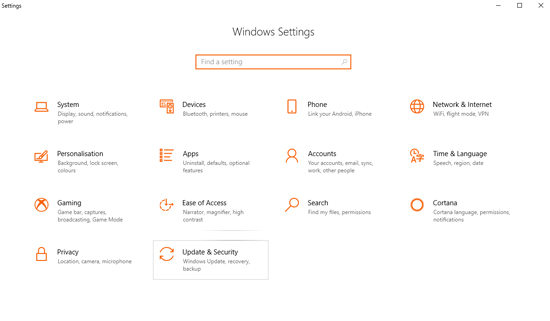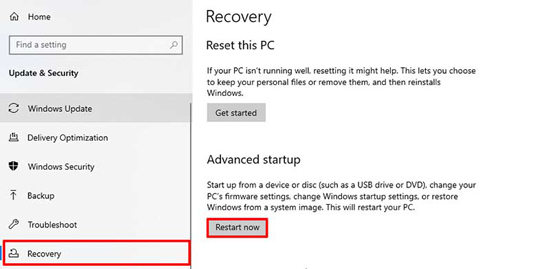"Safe Mode" is a remarkable way designed by Microsoft to help users troubleshoot different Windows problems, especially when they're having trouble logging in normally. When you boot your system into safe mode, it'll load with the minimal, yet all the essential settings and drivers.
However, booting Windows 10 in safe mode is slightly different than the earlier Windows versions. You can't press "Shift+F8" keys and expect your system to automatically boot into safe mode. So, today, we're going to explain different methods on how to boot in safe mode Windows 10. Whether you're stuck in a booting loop or want to fix a specific BSOD error, the following methods will help you get into into Windows 10 safe mode.
- Part 1: How to Start Windows 10 in Safe Mode While Booting
- Part 2: How to Boot in Windows 10 Safe Mode When Computer Boot Normally
- Part 3: How to Boot in Safe Mode in Windows 10/11 If You Have A Boot Disk
- Part 4: How to Boot in Safe Mode If You Can Log into Windows 10
Part 1: How to Start Windows 10 in Safe Mode While Booting
Windows 10 comes with a built-in "Automatic Repair Mode" that automatically gets triggered if your system fails to boot three times in a row. So, if your system is stuck in a booting loop, don't worry as the Windows diagnosis will automatically launch the "Repair Mode".
Once you're in the repair mode, you can easily boot up in safe mode Windows 10. All you have to do is follow the below-mentioned instructions.
Step 1: In the Automatic Repair window, tap "Advanced Options".
Step 2: Now, choose the "Troubleshoot" option.

Step 3: Click the "Advanced Options" button and select "Startup Settings". If the option isn't visible at first, tap the "See More Recovery Options" button.

Step 4: Now, click the "Restart" button to enable "Advanced boot options". Once the system restarts, press "4" or "F4" on your keyboard to boot your system into safe mode.

Windows 10 usually gets stuck in a booting loop due to a specific booting issue. If you're unable to fix the issue even after booting your system in safe mode, using Tenorshare Windows Boot Genius will help. It's a dedicated Windows diagnosing tool that'll help you fix various booting issues, ranging from BSOD errors to unexpected system crashes.
Part 2: How to Boot in Windows 10 Safe Mode When Computer Boot Normally
In many cases, users have reported getting stuck at the log-in screen, even after a successful boot. If that's the case, here's how to boot up in safe mode in Windows 10.
Step 1: Press & hold the "Shift" key and expand the power options. Now, click "Restart" without releasing the "Shift" key.

Step 2: Your system will restart and load the "Boot Options". Here click "Troubleshoot" and then click on "Advanced Options".

Step 3: Now, follow "Step 3-Step 4" mentioned in the previous method to successfully boot your system in safe mode.
Part 3: How to Boot in Safe Mode in Windows 10/11 If You Have A Boot Disk
Using a bootable installation media (USB/DVD) is the most convenient way to boot Windows 10/11 into a safe mode. Even if you don't have a bootable Windows 10 disk/USB Drive, you can use PassFab 4WinKey to turn your regular USB flash drive into a bootable Windows 10 installation media for free. All you'll need is a Windows 10/11 ISO image file and the tool will help you install the bootable version on your USB flash drive.
Here is how you can boot in safe mode after creating a boot disk.
Step 1: Insert the USB drive into your PC and use it to boot your system.
Step 2: Once the PC boots from the hard-drive, click the "Repair Your Computer" option in the bottom-left corner.

Step 3: Click "Troubleshoot" and choose "Command Prompt" in the next window.

Step 4: Execute the "bcdedit /set {default} safeboot minimal" and close Command Prompt.
Step 5: Click "Continue" and your PC will automatically boot in "Safe Mode".
Part 4: How to Boot in Safe Mode If You Can Log into Windows 10
If you're able to log in to your computer, the process to start Windows in safe mode is comparatively easier. In this case, you can follow two different approaches to enter Safe Mode.
Alternative 1. Using System Configuration
MSConfig is a system utility to troubleshoot the Microsoft Windows startup process, which is officially called System Configuration in Windows Vista, Windows 7, Windows 8 or Windows 10, and Microsoft System Configuration Utility in previous operating systems .So, if you ask what Windows 7 utility can be used to find out what processes are launched at startup? Then the answer is the same as Windows 10, it should be MSConfig.
Step 1: Press "Windows+R" and type "MSConfig" to launch System Configuration Window.

Step 2: Go to the Boot tab and check the "Safe Boot" option. Click "Apply" and "Ok" to save changes.

Now, simply restart your PC and it'll boot in Safe Mode.
Alternative 2. Using Windows settings
Here's how to boot up in safe mode windows 10 using the default Windows Settings app.
Step 1: Open the "Settings" app and click on "Update & Security".

Step 2: Select Recovery in the left side panel, and click "Restart Now" under the Advance Startup tab.

Step 3: Once Windows restarts, select the Troubleshoot option and follow "Step 3-Step 4" mentioned in the part 1.
Conclusion
That's how to boot up in safe mode Windows 10. Using the Safe Mode will help you troubleshoot and fix various Windows errors. However, if you're not familiar with the error and can't fix it even after booting into safe mode, we recommend using Tenorshare Windows Boot Genius. The tool has dedicated fixes for different booting issues.